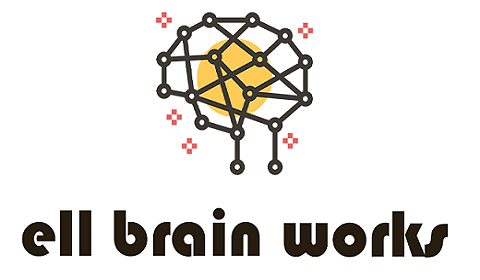Are you ready to dive into the fascinating world of gamification? Imagine a realm where mundane tasks become thrilling adventures, and rewards hold the key to unlocking your full potential. Welcome to the captivating universe of gamification platform – an innovative approach that merges psychology with technology to revolutionise motivation and engagement. In this blog post, we will uncover the secrets behind their irresistible allure, exploring how rewards work their magic on our brains and propel us towards achievement. So buckle up, for we are about to embark on a journey through the power of rewards and unravel the intricate tapestry of human psychology in gamified experiences.
Introduction to Gamification and Rewards
Gamification has become a popular concept in recent years, especially in the world of technology and business. It involves the use of game-like elements such as points, badges, leader boards, and challenges in non-game contexts to motivate and engage users. On the other hand, rewards are external incentives given to individuals for completing specific tasks or behaviours.
The combination of gamification and rewards has proven to be a powerful tool for businesses looking to increase user engagement and motivation. By tapping into our natural desires for competition, achievement, and instant gratification, gamification platforms have been able to successfully drive desired behaviours.
But what exactly makes gamification so effective? And why do rewards play such a crucial role in its success? In this section, we will delve deeper into these questions by exploring the psychology behind gamification platforms.
The Power of Intrinsic Motivation
One key aspect that sets gamification apart from traditional reward systems is its focus on intrinsic motivation rather than extrinsic motivation. Extrinsic motivation refers to behaviour that is driven by external rewards or punishments, while intrinsic motivation stems from internal factors such as personal interests and enjoyment.
Studies have shown that intrinsic motivation is a more powerful driver of long-term behaviour change compared to extrinsic motivators. When individuals are intrinsically motivated, they are more likely to engage in an activity because they find it inherently enjoyable or meaningful rather than just seeking external rewards.
By incorporating game elements like challenges and levels into tasks or activities that may not be inherently enjoyable, gamification can tap into individuals’ intrinsic motivation and make them more likely to participate and complete those tasks.
Instant Gratification and Feedback
Another psychological principle that makes gamification effective is the use of instant gratification. In games, players are often rewarded immediately for their actions, providing a sense of accomplishment and satisfaction. This constant feedback loop keeps players engaged and motivated to continue playing.
Similarly, in gamification platforms, users are often rewarded with points or badges as soon as they complete a task or challenge. This immediate reward reinforces their behaviour and encourages them to continue participating
In addition to instant gratification, gamified systems also provide continuous feedback on progress and performance. Progress bars, leader boards, and other visual representations of progress help users track their success and set goals for improvement. This feedback instils a sense of achievement in users and motivates them to keep working towards their goals.
The Role of Rewards in Gamification
While intrinsic motivation is the cornerstone of gamification, rewards still play an essential role in its success. Rewards act as an external incentive that can boost motivation for individuals who may not be intrinsically motivated to participate in a particular activity
Moreover, rewards provide a tangible representation of progress and accomplishments within the gamified system. They serve as a form of recognition for users’ efforts and can act as a status symbol within the community.
For businesses, rewards can also be used strategically to drive specific behaviours or actions that align with their goals. By offering rewards for completing tasks or achieving certain milestones, companies can incentivize desired behaviours and ultimately drive business outcomes.
Incorporating elements of gamification and rewards into non-game contexts has proven to be an effective strategy for motivating individuals and driving desired behaviours. By tapping into intrinsic motivation, providing instant gratification and feedback, and strategically using rewards, businesses can create engaging experiences that keep users motivated and invested in their products or services.
As technology continues to evolve, we can expect to see more innovative uses of gamification and rewards in various industries, from education to healthcare. As such, understanding the psychology behind these concepts will be crucial for businesses looking to harness their power successfully.
The Psychology Behind Rewards: Understanding Motivation and Behavior
Rewards have long been used as a powerful motivator in various aspects of human life. From childhood, we are conditioned to understand that good behaviour will result in positive consequences, while bad behaviour will lead to negative consequences. This fundamental concept forms the basis of reward psychology and is the driving force behind the effectiveness of rewards in influencing human motivation and behaviour.
The study of reward psychology delves into understanding how rewards can be used to enhance performance, increase engagement and drive desired behaviours. It is based on the premise that humans are inherently motivated by rewards, as they fulfil our basic needs for recognition, achievement, and belonging.
One key aspect of reward psychology is the concept of reinforcement. Reinforcement refers to any event or stimulus that strengthens or increases the likelihood of a particular response or behaviour. Rewards serve as positive reinforcement by providing an incentive for individuals to repeat certain actions or behaviours.
Moreover, rewards trigger the release of dopamine in our brains – a neurotransmitter associated with pleasure and motivation. As we receive rewards, our brain experiences a sense of satisfaction and pleasure, which encourages us to continue seeking out similar rewarding experiences.
In addition to reinforcing good behaviour, rewards also have the power to shape new behaviours through operant conditioning. This psychological theory states that we learn through reinforcements such as rewards and punishments. By consistently rewarding desired behaviours, individuals can learn new skills or habits over time.
Furthermore, rewards act as powerful motivators by satisfying our intrinsic psychological needs for competence, autonomy, and relatedness. When these needs are fulfilled, individuals experience a sense of self-worth, control over their actions, and a feeling of belonging. As a result, they are more motivated to engage in behaviours that lead to rewards.
Moreover, rewards can also act as external motivators for those who may not have an intrinsic desire to perform a certain behaviour. For example, an employee may not enjoy their job but will continue to work hard if they are rewarded with bonuses or recognition.
However, it is important to note that the effectiveness of rewards in motivating behaviour can vary depending on the type of reward and its perceived value by the individual. Intrinsic rewards such as praise and recognition can be more effective than extrinsic rewards such as money or material goods in driving long-term motivation and engagement.
Reward psychology highlights the powerful influence that rewards have on human motivation and behaviour. By understanding how rewards fulfil our psychological needs for reinforcement, satisfaction, and recognition, we can use them effectively to drive positive behaviours and outcomes.
How Gamification Platforms Utilise Rewards to Drive Engagement
Gamification platforms have become increasingly popular in recent years for their ability to motivate and engage users in a variety of activities, from learning new skills to completing tasks. One of the key factors that make these platforms so successful is the use of rewards.
Rewards are incentives given to users for completing desired actions or behaviours on a gamified platform. They can come in various forms such as points, badges, levels, virtual currency, and even physical prizes. These rewards serve as powerful motivators for individuals to continue engaging with the platform and working towards their goals.
One of the main ways gamification platforms utilise rewards is through a system of immediate gratification. When users receive a reward immediately after completing an action or task, it triggers the brain’s pleasure response by releasing dopamine, a chemical associated with feelings of satisfaction and happiness. This instant gratification creates positive reinforcement and encourages individuals to repeat the behaviour again in hopes of receiving another reward.
Moreover, rewards also provide a sense of accomplishment and progress for users. As they earn points or unlock new levels or badges, it gives them a sense of achievement and recognition for their efforts. This feeling of progress and success can be highly motivating for individuals who want to improve themselves or achieve specific goals.
Another important aspect of rewards in gamification platforms is their ability to create healthy competition among users. Many platforms incorporate leaderboards where users can see how they rank compared to others based on points or achievements earned. This drives individuals to work harder towards earning more rewards and climbing up the leaderboard. This competitive element can be especially effective in driving engagement for users who thrive on competition and want to be at the top of the pack.
In addition to traditional rewards like points and badges, some gamification platforms also offer real-world incentives such as discounts or free products. These tangible rewards can be particularly appealing to users and serve as an extra motivator to continue engaging with the platform.
Overall, rewards are a crucial component of gamification platforms as they tap into human psychology and leverage intrinsic motivators such as instant gratification, accomplishment, progress, and competition. By using rewards effectively, these platforms can drive engagement and help individuals reach their goals in a fun and interactive way.
Conclusion: The Importance of Constantly Evolving and Adapting Reward Strategies in Gamification
As we have explored throughout this article, rewards play a crucial role in the success of gamification platforms. They tap into our innate desires for achievement, recognition, and progress, driving us to engage with these platforms and ultimately leading to positive behaviour change.
However, it is important to note that rewards alone are not enough to sustain long-term engagement. In order for gamification platforms to truly be effective, they must constantly evolve and adapt their reward strategies. This means regularly evaluating the effectiveness of existing rewards and implementing new ones as needed.
One reason for this constant evolution is the concept of hedonic adaptation – the tendency for humans to quickly get used to positive experiences or rewards. What may initially feel exciting and motivating can quickly become mundane if it is not refreshed or updated. Therefore, it is important for gamification platforms to introduce new challenges and rewards regularly in order to maintain interest and motivation from users.
Moreover, as technology continues to advance at a rapid pace, so do user expectations. What may have been considered an innovative reward strategy a few years ago may now seem outdated or uninteresting. By constantly evolving their reward strategies, gamification platforms can stay ahead of the curve and continue providing engaging experiences for their users.
In addition, adapting reward strategies also allows for personalization – another key aspect of successful gamification. Not all users are motivated by the same types of rewards or challenges. Some may prefer tangible rewards like discounts or prizes, while others may be more motivated by virtual rewards such as badges or levels. By regularly adapting and diversifying reward strategies, gamification platforms can better cater to the individual preferences of their users, leading to increased engagement and motivation.
Lastly, it is important to note that constantly evolving and adapting reward strategies also allows for experimentation. Gamification platforms can test out new ideas and gather data on their effectiveness before fully implementing them. This allows for a continuous cycle of improvement and optimization, ultimately leading to a more effective and engaging platform.
In conclusion, rewards are a crucial component of successful gamification strategies. However, in order for these strategies to be truly effective in the long run, they must constantly evolve and adapt in response to changing user expectations and motivations. By doing so, gamification platforms can ensure sustained engagement from their users and drive positive behaviour change.




